UV Fused Silica Positive Meniscus Lenses, Uncoated
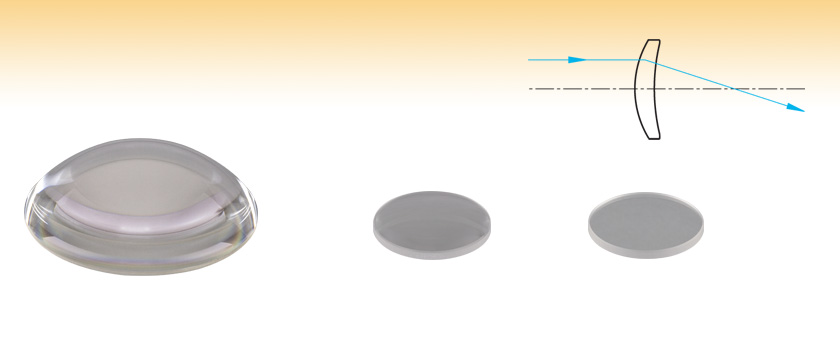
- Increases the NA of Lens Systems
- Frequently Used for Beam Focusing Applications
- Minimizes the Increase in Spherical Aberrations for
Multi-Element Systems
LE4412
(Ø2")
LE4173
(Ø1")
LE4484
(Ø1")

Please Wait
| Type | Uncoateda |
|---|---|
| Lens Shape | Positive Meniscus |
| Diameters Available | 1" or 2" |
| Diameter Tolerance | +0.00 mm / -0.10 mm |
| Substrate Material | UV-Grade Fused Silicab |
| Wavelength Range | 185 nm - 2.1 μm |
| Transmission | TInternal ≥ 88%/cm @ 185 nm |
| Focal Length Tolerance | ±1% |
| Surface Quality | 40-20 Scratch-Dig |
| Clear Aperture | >90% of Dia. |
| Design Wavelength | 588 nm |
| Index of Refraction (@ Design λ) |
1.458 |
| Centration | ≤3 arcmin |
| Click on the red Document icon next to the item numbers below to access the Zemax file download. Our entire Zemax Catalog is also available. |
Features
- Choose from Ø1" or Ø2" Versions
- Wavelength Range: 185 nm - 2.1 μm (uncoated)
- Focal Lengths Available from 100.0 - 1000.0 mm
- Fabricated from UV-Grade Fused Silica
- Spherical Surface Power: 3 Fringes
- Spherical Surface Irregularity: λ/4
Thorlabs' UV-Grade Fused Silica Positive Meniscus Lenses are available either uncoated or with a UV antireflection coating for the 245 - 400 nm range deposited on both surfaces. Compared to N-BK7, UV-Grade Fused Silica offers high transmission deeper into the UV (down to 185 nm), better homogeneity, and a lower coefficient of thermal expansion. In addition, UV fused silica exhibits virtually no laser-induced fluorescence (as measured at 193 nm), making it an ideal choice for applications from the UV to the near IR.
Positive meniscus (convex-concave) lenses, which are thicker in the middle than at the edges and cause light rays to converge, are designed to minimize third-order spherical aberration. They are often used in conjunction with other lenses to decrease the focal length, and therefore increase the numerical aperture (NA), of an optical assembly. When used to focus a collimated beam, as shown in the diagram above, the convex side of the lens should face the source to minimze spherical aberration. Since a positive meniscus lens has a greater radius of curvature on the concave side of the lens than on the convex side, real images can be formed.
Thorlabs offers their negative meniscus lenses in Ø1 and Ø2" versions. Each size is compatible with a multitude of Thorlabs lens mounts. Please see the Mounting Options tab for details.
| Quick Links to Other Spherical Singlets | ||||||
|---|---|---|---|---|---|---|
| Plano-Convex | Bi-Convex | Best Form | Plano-Concave | Bi-Concave | Positive Meniscus | Negative Meniscus |
Below is the transmission curve for a 10 mm thick uncoated sample of UV fused silica when the incident light is normal to the surface. Please note that this is the measured transmission, including surface reflections.
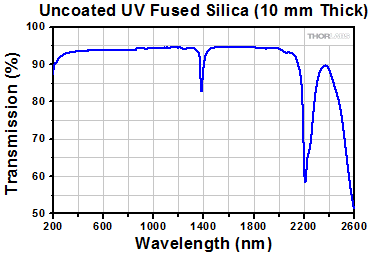 Click to Enlarge
Click to Enlarge
Click Here for Raw Data
Using Positive Meniscus Lenses
- Achieve Tighter Focusing by Combining a Meniscus Lens with Plano-Convex Lenses
- Build Multi-Element Lens Systems to Achieve Higher NA without Significant Increases in Aberrations
Positive meniscus lenses are designed to minimize spherical aberration. They have one convex and one concave surface. When used in combination with another lens, a positive meniscus lens will shorten the focal length and increase the NA of the system. Figures 3.1 through 3.3 illustrate the performance gains that can be achieved by using multi-element imaging systems. The combination of a meniscus lens and a plano-convex lens yields a 21 µm focused spot versus a 240 µm spot from the single plano-convex lens. Figure 3.3 shows a meniscus lens being used to shorten the focal length of a 100 mm focal length plano-convex lens. In addition, the transverse and lateral aberrations are greatly reduced. The convex surface of both lenses should be facing away from the image.
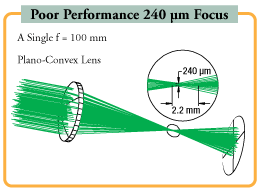
Click to Enlarge
Figure 3.1 A single plano-convex lens focuses the beam to a Ø240 µm spot.
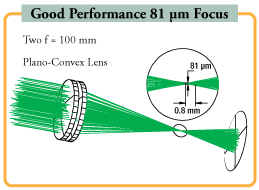
Click to Enlarge
Figure 3.2 Two plano-convex lenses focus the beam to a Ø81 µm spot.
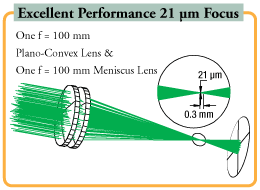
Click to Enlarge
Figure 3.3 A plano-convex lens used with a positive meniscus lens focuses the beam to a Ø21 µm spot.
| Recommended Mounting Options for Thorlabs Lenses | ||
|---|---|---|
| Item # | Mounts for Ø2 mm to Ø10 mm Optics | |
| Imperial | Metric | |
| (Various) | Fixed Lens Mounts and Mini-Series Fixed Lens Mounts for Small Optics, Ø5 mm to Ø10 mm | |
| (Various) | Small Optic Adapters for Use with Standard Fixed Lens Mounts, Ø2 mm to Ø10 mm | |
| Item # | Mounts for Ø1/2" (Ø12.7 mm) Optics | |
| Imperial | Metric | |
| LMR05 | LMR05/M | Fixed Lens Mount for Ø1/2" Optics |
| MLH05 | MLH05/M | Mini-Series Fixed Lens Mount for Ø1/2" Optics |
| LM05XY | LM05XY/M | Translating Lens Mount for Ø1/2" Optics |
| SCP05 | 16 mm Cage System, XY Translation Mount for Ø1/2" Optics | |
| (Various) | Ø1/2" Lens Tubes, Optional SM05RRC Retaining Ring for High-Curvature Lenses (See Below) |
|
| Item # | Mounts for Ø1" (Ø25.4 mm) Optics | |
| Imperial | Metric | |
| LMR1 | LMR1/M | Fixed Lens Mount for Ø1" Optics |
| LM1XY | LM1XY/M | Translating Lens Mount for Ø1" Optics |
| ST1XY-S | ST1XY-S/M | Translating Lens Mount with Micrometer Drives (Other Drives Available) |
| CXY1A | 30 mm Cage System, XY Translation Mount for Ø1" Optics | |
| (Various) | Ø1" Lens Tubes, Optional SM1RRC Retaining Ring for High-Curvature Lenses (See Below) |
|
| Item # | Mount for Ø1.5" Optics | |
| Imperial | Metric | |
| LMR1.5 | LMR1.5/M | Fixed Lens Mount for Ø1.5" Optics |
| (Various) | Ø1.5" Lens Tubes, Optional SM1.5RR Retaining Ring for Ø1.5" Lens Tubes and Mounts |
|
| Item # | Mounts for Ø2" (Ø50.8 mm) Optics | |
| Imperial | Metric | |
| LMR2 | LMR2/M | Fixed Lens Mount for Ø2" Optics |
| LM2XY | LM2XY/M | Translating Lens Mount for Ø2" Optics |
| CXY2 | 60 mm Cage System, XY Translation Mount for Ø2" Optics |
|
| (Various) | Ø2" Lens Tubes, Optional SM2RRC Retaining Ring for High-Curvature Lenses (See Below) |
|
| Item # | Adjustable Optic Mounts | |
| Imperial | Metric | |
| LH1 | LH1/M | Adjustable Mount for Ø0.28" (Ø7.1 mm) to Ø1.80" (Ø45.7 mm) Optics |
| LH2 | LH2/M | Adjustable Mount for Ø0.77" (Ø19.6 mm) to Ø2.28" (Ø57.9 mm) Optics |
| VG100 | VG100/M | Adjustable Clamp for Ø0.5" (Ø13 mm) to Ø3.5" (Ø89 mm) Optics |
| SCL03 | SCL03/M | Self-Centering Mount for Ø0.15" (Ø3.8 mm) to Ø1.77" (Ø45.0 mm) Optics |
| SCL04 | SCL04/M | Self-Centering Mount for Ø0.15" (Ø3.8 mm) to Ø3.00" (Ø76.2 mm) Optics |
| LH160CA | LH160CA/M | Adjustable Mount for 60 mm Cage Systems, Ø0.50" (Ø13 mm) to Ø2.00" (Ø50.8 mm) Optics |
| SCL60CA | SCL60CA/M | Self-Centering Mount for 60 mm Cage Systems, Ø0.15" (Ø3.8 mm) to Ø1.77" (Ø45.0 mm) Optics |
Mounting High-Curvature Optics
Thorlabs' retaining rings are used to secure unmounted optics within lens tubes or optic mounts. These rings are secured in position using a compatible spanner wrench. For flat or low-curvature optics, standard retaining rings manufactured from anodized aluminum are available from Ø5 mm to Ø4". For high-curvature optics, extra-thick retaining rings are available in Ø1/2", Ø1", and Ø2" sizes.
Extra-thick retaining rings offer several features that aid in mounting high-curvature optics such as aspheric lenses, short-focal-length plano-convex lenses, and condenser lenses. As shown in the animation to the right, the guide flange of the spanner wrench will collide with the surface of high-curvature lenses when using a standard retaining ring, potentially scratching the optic. This contact also creates a gap between the spanner wrench and retaining ring, preventing the ring from tightening correctly. Extra-thick retaining rings provide the necessary clearance for the spanner wrench to secure the lens without coming into contact with the optic surface.
| Posted Comments: | |
Alfonso Suances
(posted 2021-05-10 03:03:59.303) Hello.
I'm an engineering student from the University of Vigo (Spain) and I was interested in recieving information about the Damage Threshold of your UV Fused Silica Positive Meniscus Lenses as we are developing a laser head for a project.
Please, contact us as soon as posible.
Sincerely, Alfonso, YLohia
(posted 2021-05-12 11:03:47.0) Thank you for contacting Thorlabs. Unfortunately, we have not yet obtained conclusive damage threshold test data on these uncoated optics. |


 Products Home
Products Home






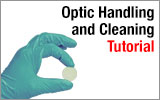
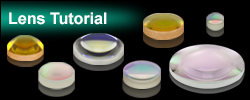
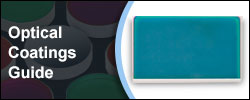
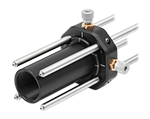
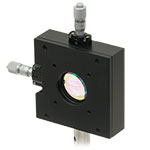
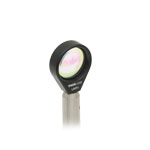
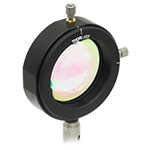
 UV Fused Silica, Uncoated
UV Fused Silica, Uncoated